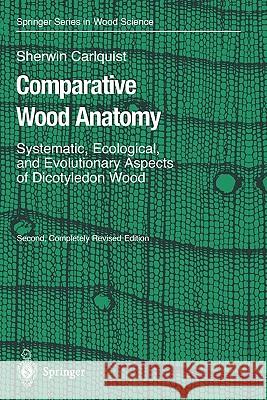Comparative Wood Anatomy: Systematic, Ecological, and Evolutionary Aspects of Dicotyledon Wood » książka
Comparative Wood Anatomy: Systematic, Ecological, and Evolutionary Aspects of Dicotyledon Wood
ISBN-13: 9783642074387 / Angielski / Miękka / 2010 / 448 str.
This book is not concerned directly with wood identification, although ability to recognize the wood features discussed in the preceding chapters is essential for work in wood identification. The present chapter is concerned with how wood characters have been and can be used in taxonomic and phylogenetic studies - and also which wood characters are likely or not likely to be useful, in general. In wood identification, a match of an unknown wood with known woods is usually attempted. In systematic application of wood data, similari ties and differences among species, genera, and families are assessed ( usually, today, in terms of a cladistic analysis). One should be especially cautious in interpreting relation between taxa the woods of which have attained similar evolutionary levels. This possibility is a very real one, because so many wood features have evolved similarly in phylads that are not closely related to each other. For example, storied wood structure has been attained in a number of phylads independently. By itself storied wood structure cannot be used as an indicator of relationship between two families, but a cladogram ( using a range of phyletically reliable features) might demoo strate that two families acquired storied structure before divergence ( a synapo morphy) and thereby a strong case for relationship of the two families is made."











